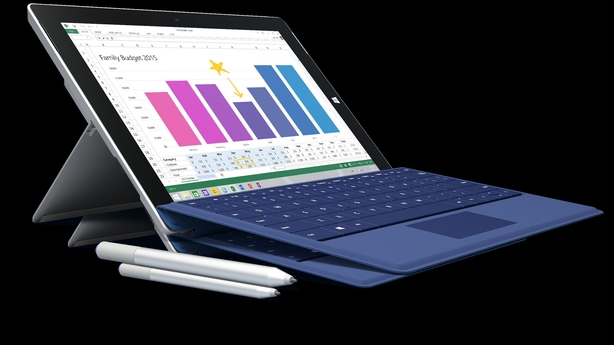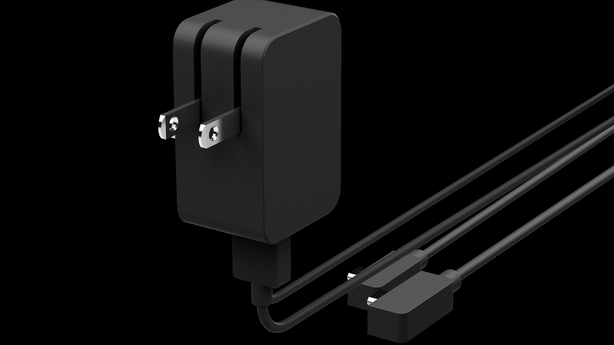By Will Goodbody, Science & Technology Correspondent
When Microsoft released the Surface Pro 3 last year, it was widely hailed as the company’s best attempt yet at a laptop/tablet hybrid.
The company would like Surface to become known as the device that killed the laptop. That’s still a lot more of an aspiration than a reality, but the product is gradually getting there, with each iteration.
But one of the biggest criticisms of the Surface Pro has always been the price. The Surface Pro 3 starts at €819 (without keyboard) – a price tag which puts it beyond the reach of most students, and potential consumer and business users on a tight budget.
So Microsoft has decided to try to counter that issue by releasing a lower spec, cheaper version.
Enter Surface 3.
From a design perspective it’s pretty hard to tell the difference between the two. Surface 3 has the same premium look magnesium alloy chassis as Surface Pro 3. The prominent vent has gone though, as the lower spec innards don’t generate enough heat to warrant a fan.
Microsoft has made some play of the fact that the Surface 3 is the lightest and thinnest it has ever made. But there is a very good reason why that is the case. And it’s more to do with what isn’t inside than what is - as you’ll find out later.
One of the definite downsides to the Surface 3 is the kickstand. The Surface Pro 3 introduced a multiposition version to the device range. But for reasons of cost, the Surface 3 reverts back to the older generation three point version, which is clearly not as handy.

There’s plenty of ports including USB 3.0, a microSD, MiniDisplay and MicroUSB connector for charging. That’s a significant step forward for the product, which has finally ditched the magnetic charging port that was unique to the Surface. The adoption of MicroUSB for charging means you can now use similar chargers for other devices on your Surface, and vice-versa, which is a big plus.

One notable difference between the Surface 3 and the Pro model is the display. It’s now 10.8 inch in size, compared to 12 inches on the premium model. With a resolution of 1,920x1,280 the ClearType Full HD Plus screen is pretty respectable – colours are rich and sharp, viewing angles are good.
Inside, the Intel Core processors found in the Surface Pro 3 have gone, replaced by a cheaper and lighter power Quad-core Intel Atom x7. That’s a big difference on paper. But in reality when browsing the web, watching video, playing basic games and running light apps, the impact is not so discernible.
If you want to run more heavy duty games and apps, it may be more problematic though. But then this product is not aimed at such users in the first place. And Microsoft says so itself.
Surface 3 comes with a choice of either 2GB or 4GB of RAM and 64GB or 128GB of memory. Battery life is 10 hours on video playback. That obviously varies considerably when it is being used for other functions and apps. But overall the battery is not bad, and that’s mostly down to the fact that the less powerful processor draws reduced power.
Another positive development is that Surface 3 runs the full 64-bit version of Windows 8.1, not the RT that was on the earlier non-Pro versions of the product. That means it should run all of the software you can already run on your desktop/laptop. The device is also obviously on the free upgrade path for Windows 10 when it is released later this year.
There is a rear facing 8MP camera, which Microsoft says is suitable for students to record lectures, and a front facing 3.5MP. Both capture 1080p video. But there’s no flash.
There will be a 4G version later in the year. While Surface 3 comes with 1TB of One Drive storage and one year subscription to Office 365 for a year.
But the stylus is not included, nor is the Pro-Type Cover (€154.90), which is really a must-have .
When you take that into account, and that the starting price for the Surface 3 is €609.99 (remarkably $499 in the US), it raises the question is Microsoft’s affordable version of the device really all that affordable?
Surface 3 is a very likeable device in lots of way. But does it really deliver enough bang for the buck to make it a realistic alternative for students or those looking for a reasonably priced all-round laptop/tablet hybrid?
The market will decide.
Comments welcome via Twitter to @willgoodbody

